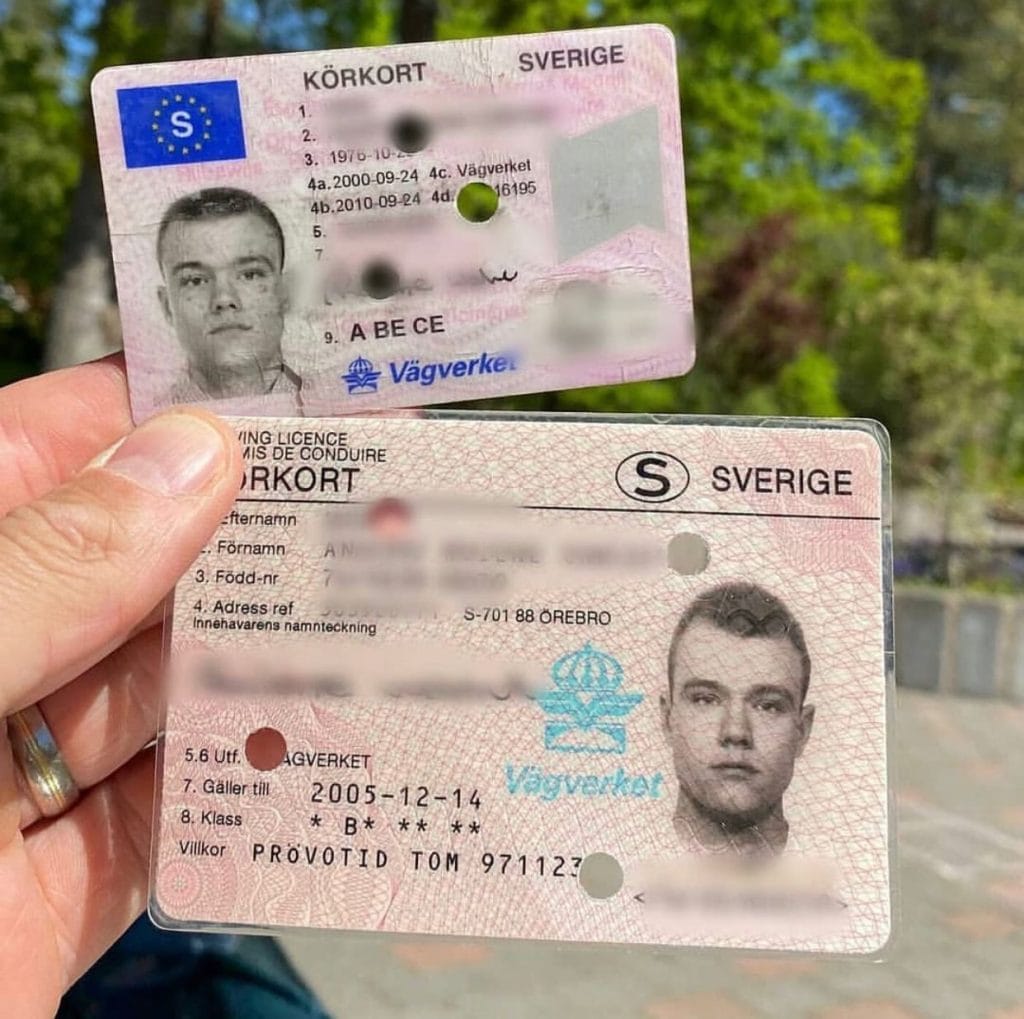The Reasons Buy Driving License Is Everyone's Desire In 2024
페이지 정보
작성자 Alice 작성일25-08-09 12:21 조회3회 댓글0건본문
The Comprehensive Guide to Legally Obtaining a Driving License
Driving is a fundamental skill for numerous, offering the flexibility to take a trip where and when you want, typically making life easier and satisfying. However, obtaining a driving license is a procedure that requires understanding, persistence, and adherence to legal procedures. This guide aims to supply a comprehensive overview of the actions one need to follow to legally get a driving license, highlighting important factors to consider and regularly asked concerns to ensure a smooth and hassle-free experience.

Understanding the Basics
Before diving into the application process, it's crucial to comprehend the fundamental requirements and types of driving licenses readily available. Driving laws differ substantially from country to nation, and even within various states or provinces within the same nation. Normally, there are numerous types of driving licenses, including:

- Learner's Permit: This is frequently the primary step in the procedure, permitting new drivers to gain experience under supervision.
- Provisional License: Issued after passing a fundamental driving test, this license typically includes constraints and is a stepping stone to a complete license.
- Complete Driver's License: Once all the essential requirements are satisfied, motorists can obtain a complete license, which provides total driving opportunities.
- Commercial Driver's License (CDL): Required for those who wish to run commercial automobiles, such as trucks or buses.
Actions to Obtain a Driving License
1. Research Study Local Driving Laws
The very first step in getting a driving license is to investigate the particular requirements in your area. Check out the official website of your local Department of Motor Vehicles (DMV) or equivalent firm to find in-depth info about the licensing procedure, including age restrictions, required files, and fees.
2. Prepare Required Documentation
Each jurisdiction has its own set of files that should be submitted to make an application for a driving license. Typically required documents include:
- Proof of Identity: A passport, birth certificate, or state-issued ID.
- Evidence of Residency: Utility expenses, lease agreements, or other official documents that validate your address.
- Social Security Number (if relevant): In some countries, a social security number or equivalent is required for recognition.
- Vision Test Results: Some locations require a vision test before issuing a learner's authorization or license.
3. Take a Driver's Education Course
Many states and nations need new motorists to finish a driver's education course. These courses are developed to teach the guidelines of the roadway, traffic laws, and safe driving practices. They can be completed online or in a class setting and often consist of both theoretical and practical components.
4. Get a Learner's Permit
As soon as the needed documents is prepared and the driver's education course is completed, the next step is to request a student's authorization. This usually includes checking out the DMV or sending an application KöRkort Snabbt Och Enkelt Online (Https://Www.Wardbennage.Top/Automotive/Korkort-Online-A-Comprehensive-Guide-To-Online-Driving-License-Services). You will likewise require to pass a written test that covers traffic laws and driving understanding.
5. Practice Driving
With a learner's permit, you can begin practicing driving under the supervision of a certified adult. This is a crucial action in developing your confidence and skills behind the wheel. It's also essential to gain experience in different driving conditions, such as night driving, highway driving, and driving in harsh weather condition.
6. Set up and Pass the Driving Test
After getting adequate driving experience, you can set up a driving test with the DMV. The test will evaluate your capability to safely run a car and follow traffic laws. You will require to bring a correctly registered and guaranteed car to the test, and the inspector will evaluate your driving skills on a predetermined path.
7. Make an application for a Provisional License
If you pass the driving test, you will generally receive a provisionary license. This license may feature limitations, such as a curfew or a limit on the number of guests you can have in the car. These constraints are developed to reduce the danger of mishaps and help new drivers acclimate to the roadway.
8. Update to a Full License
As soon as you have held a provisional license for the necessary duration and fulfilled any additional requirements, you can update to a complete driver's license. This process typically includes a simple application and might need a retest or extra documentation.
Tips for a Successful Application
- Start Early: Begin the process as quickly as you fulfill the age requirement to provide yourself sufficient time to prepare.
- Stay Informed: Keep current with any changes in driving laws or DMV treatments.
- Practice Regularly: Consistent practice is essential to constructing confidence and improving your driving abilities.
- Stay Calm During the Test: Anxiety can impact your performance, so take deep breaths and remain focused.
- Follow DMV Instructions: Pay very close attention to the guidelines provided by the DMV and the examiner during your test.
Frequently Asked Questions (FAQs)
Q: What is the minimum age to obtain a student's permit?
A: The minimum age differs by jurisdiction. In the United States, it normally ranges from 15 to 16 years of ages. In the UK, the minimum age is 17. Inspect your local DMV site for specific details.
Q: Can I request a driver's license online?
A: Some jurisdictions enable you to finish parts of the application process online, such as submitting types and scheduling tests. However, you will typically need to visit a DMV office in individual to send required documents and take the driving test.
Q: What occurs if I fail the driving test?
A: If you fail the driving test, you can normally retake it after a particular duration. This period varies by place, however it is typically a few weeks. It's an excellent idea to practice more before retaking the test to enhance your opportunities of success.
Q: Can I drive alone with a learner's authorization?
A: No, a learner's authorization usually needs you to be accompanied by a certified grownup, generally over 21 years old, who is seated in the front passenger seat.
Q: Is a vision test needed to get a driving license?
A: Yes, a lot of jurisdictions need a vision test to ensure that you can securely run a vehicle. You can typically take this test at the DMV or with an authorized optometrist.
Q: How long does it require to get a full driver's license?
A: The time required to get a complete driver's license varies depending upon your jurisdiction and the particular actions involved. Normally, it can take numerous months, consisting of the time needed to finish a driver's education course, hold a student's authorization, and pass the driving test.
Q: Can I use a provisionary license to drive for work?
A: It depends on the restrictions put on your provisionary license. Some provisional licenses allow you to drive for work, while others might have particular constraints. Check your license for information or get in touch with the DMV for explanation.
Q: What is the difference between a learner's permit and a provisionary license?
A: A student's authorization is the first phase of the licensing process and permits you to drive just under guidance. A provisional license, on the other hand, grants you more driving advantages but might still have some restrictions, such as a curfew or guest limits.
Q: Can I get a business driver's license (CDL) without a complete driver's license?
A: No, you generally need a complete driver's license before requesting a CDL. A CDL is a specialized license that requires additional training and testing, and it is just provided to those who have actually shown the capability to safely operate a standard automobile.
Q: What should I do if I lose my driving license?
A: If you lose your driving license, you should report it to the DMV and obtain a replacement. You might require to supply evidence of identity and pay a fee. It's likewise a great idea to alert your insurance provider and any other relevant parties.
Acquiring a driving license is a substantial turning point that opens new opportunities and increases self-reliance. By following the steps detailed in this guide and staying informed about local laws and requirements, you can ensure a smoother and more successful licensing process. Remember that driving is a serious responsibility, and making the effort to discover and practice is vital for your safety and the security of others on the road.
댓글목록
등록된 댓글이 없습니다.














